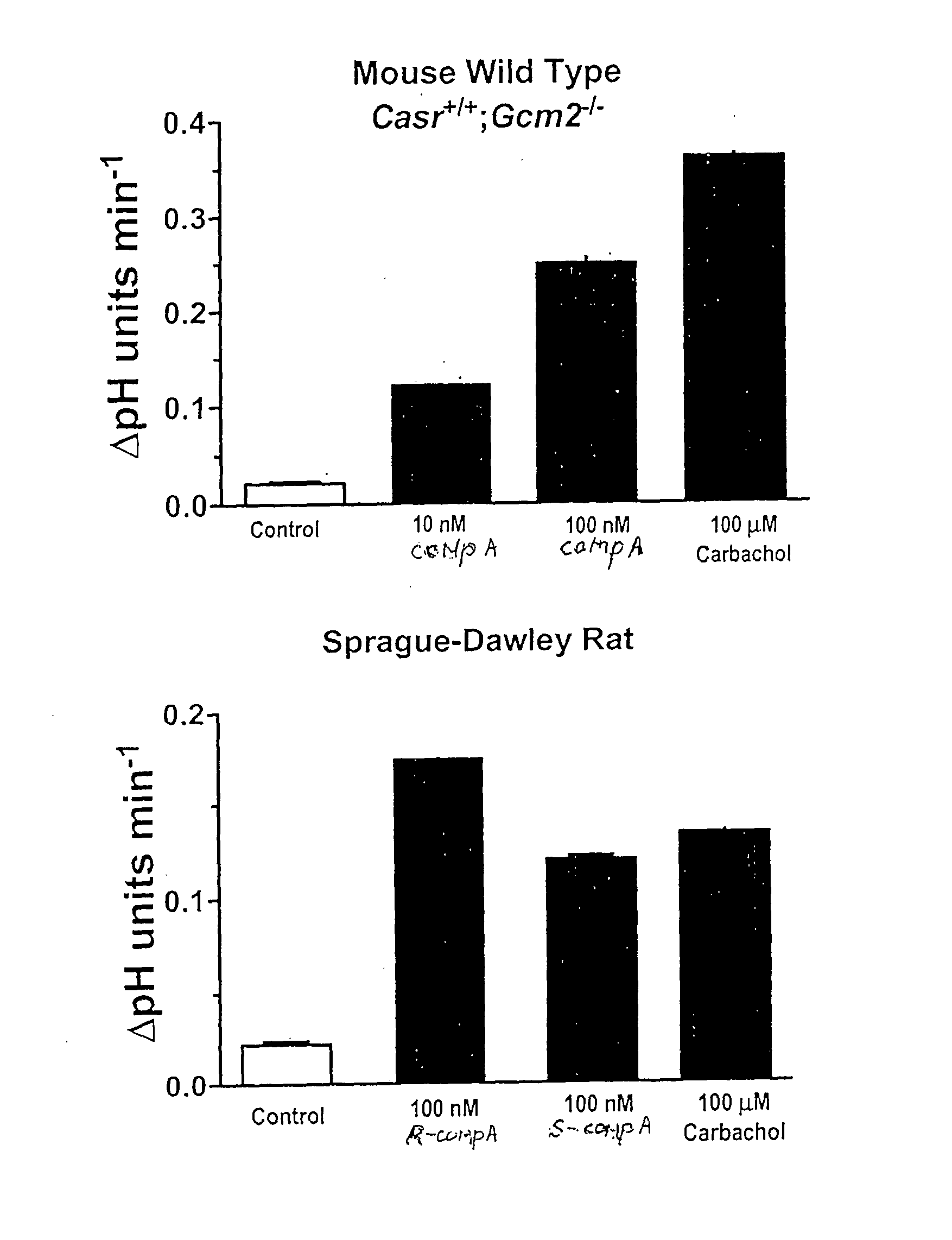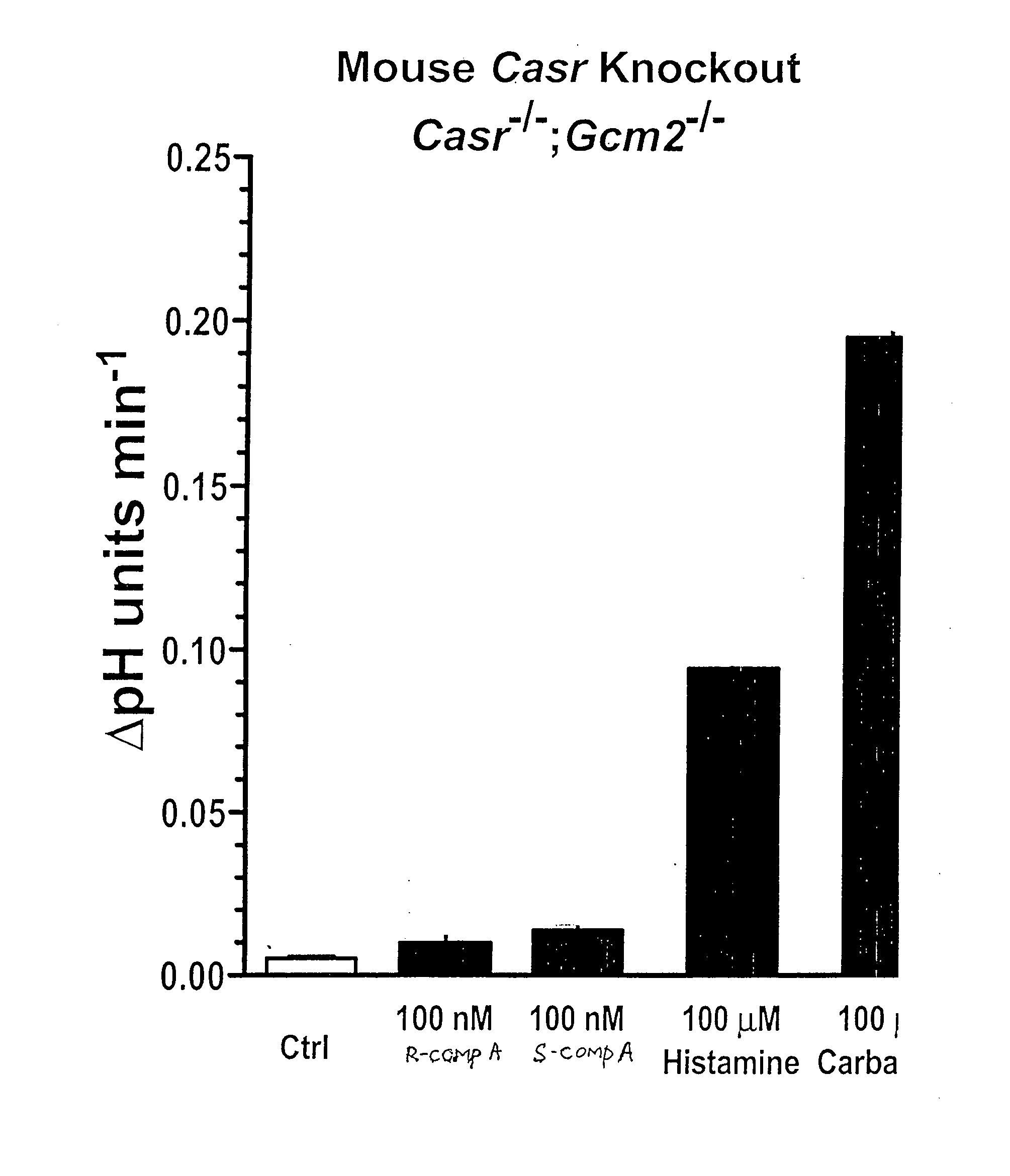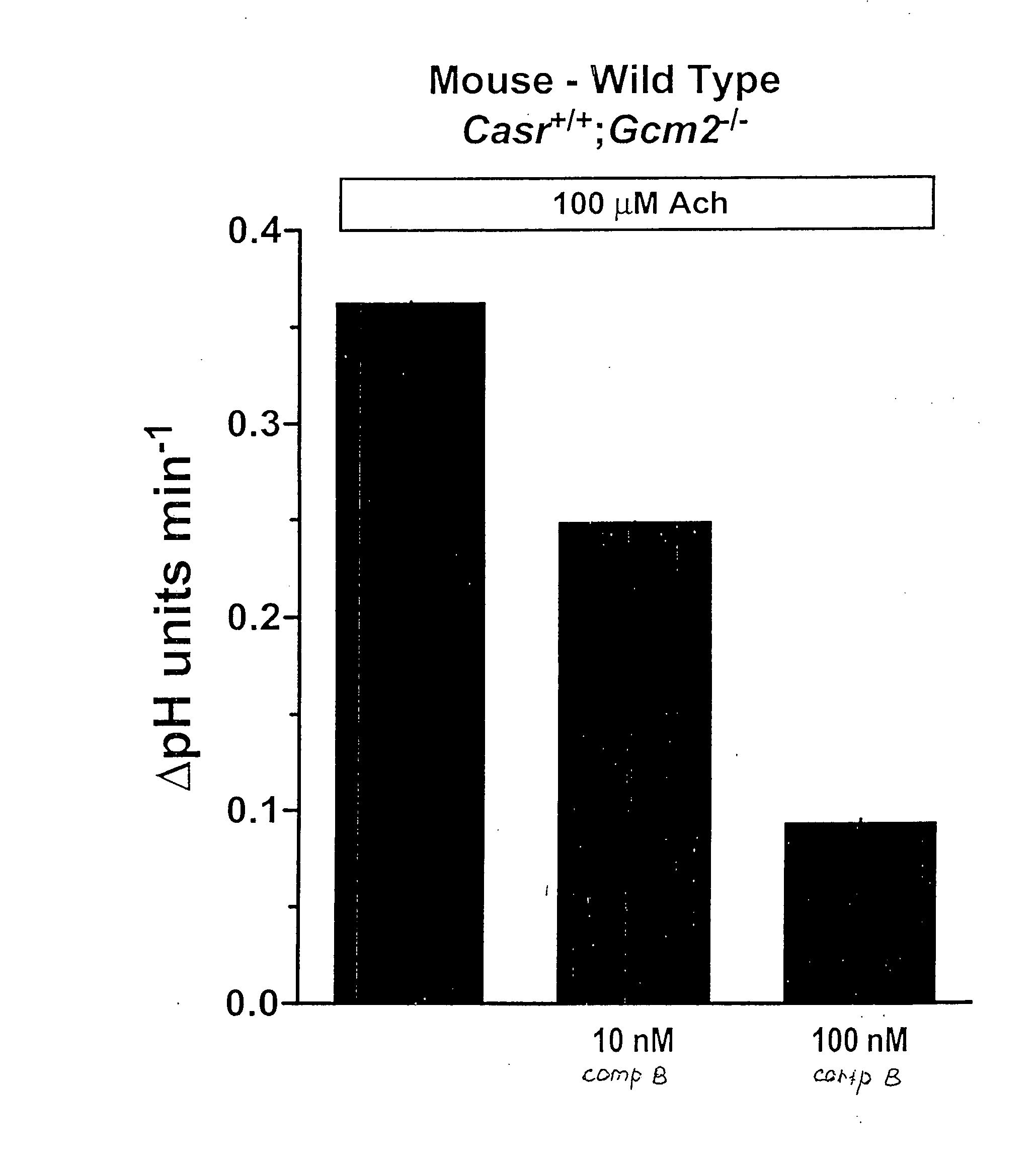Methods of treating hyperacidic disorders
a hyperacidic disorder and hypersensitivity technology, applied in the field of medicine, can solve the problems of gerd, significant morbidity, complex pathophysiology of gerd, and significant impairment of quality of life by chronic disease, so as to avoid tight fitting clothes and eliminate smoking
- Summary
- Abstract
- Description
- Claims
- Application Information
AI Technical Summary
Benefits of technology
Problems solved by technology
Method used
Image
Examples
example 1
[0178]This example outlines methods and techniques used in the present invention.
[0179]Animals.
[0180]Male (Casr+ / +; Gcm2− / −) or CaSR knockout (Casr− / −; Gcm2− / −) mice weighing 22-27 grams (upper panel) or male Sprague-Dawley rats weighing 220-275 grams (lower panel) were fasted with ad lib access to water for 18 hours prior to experimentation. The animals were exposed to an overdose of isofluorane and the stomach was removed by a total gastrectomy. The corpus was removed from the stomach and sectioned at 4° C. All mice were generated at Yale University from a breeding colony. Male Sprague-Dawley rats were purchased from Charles River Laboratories Inc. (Wilmington, Mass.). All animals were cared for according to the standard protocols of the Yale University Animal Care and Use Committee.
[0181]Chemical Reagents.
[0182]The HEPES-Ringer solution contained (in mmol / L): NaCl 125; KCl 5; MgCl2 0.5; HEPES 22, CaCl2 0.1 or 1.6; glucose 10, pH=7.4. The solution was bubbled with 100% O2. 2′,7′-b...
example 2
[0188]This experiment (FIG. 1) demonstrates the ability of addition of a calcimimetic to induce acid secretion by superfused gastric glands isolated either from control Casr+ / +; Gcm2− / − mice (upper panel) or Sprague-Dawley rats (lower panel). Rates of recovery were compared to 100 μM concentration of the cholinergic, carbachol, a secretagogue used to maximally stimulate gastric acid secretion by gastric glands. The calcimimetic Compound A increased acid secretion by gastric glands from both mice and rats. The effect of Compound A was concentration dependent and the S enantiomer was less potent than the R enantiomer. The data demonstrate the ability of a calcimimetic to stimulate gastric acid secretion.
example 3
[0189]This experiment (FIG. 2) demonstrates that the effect of a calcimimetic to stimulate gastric acid secretion requires expression of a functional CaSR in gastric parietal cells. Gastric acid secretion is measured in Casr− / −; Gcm2− / − mice that lack a functional CaSR. 100 μM histamine or 100 μM carbachol increases acid secretion demonstrating that mice lacking a functional CaSR exhibit a normal capacity to secrete acid when stimulated by natural secretagogues. This demonstrates that CaSR knockout mice have the cellular machinery for the classical secretagogue pathways to stimulate acid secretion. In contrast, neither R nor S enantiomer of Compound A has an effect on basal acid secretion in these CaSR knockout mice demonstrating that the action of a calcimimetic to increase gastric acid secretion requires the presence of a functional CaSR.
PUM
| Property | Measurement | Unit |
|---|---|---|
| pH | aaaaa | aaaaa |
| emission wavelengths | aaaaa | aaaaa |
| emission wavelengths | aaaaa | aaaaa |
Abstract
Description
Claims
Application Information
 Login to View More
Login to View More - R&D
- Intellectual Property
- Life Sciences
- Materials
- Tech Scout
- Unparalleled Data Quality
- Higher Quality Content
- 60% Fewer Hallucinations
Browse by: Latest US Patents, China's latest patents, Technical Efficacy Thesaurus, Application Domain, Technology Topic, Popular Technical Reports.
© 2025 PatSnap. All rights reserved.Legal|Privacy policy|Modern Slavery Act Transparency Statement|Sitemap|About US| Contact US: help@patsnap.com



